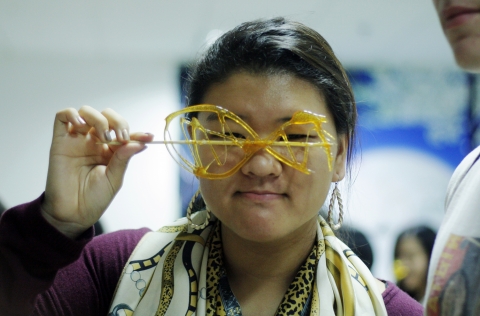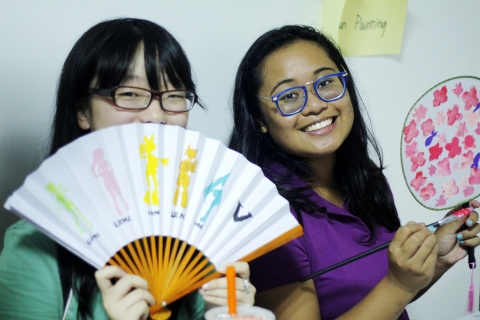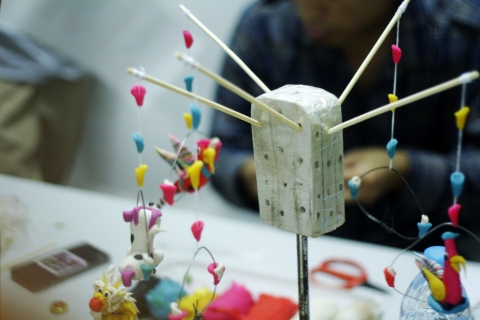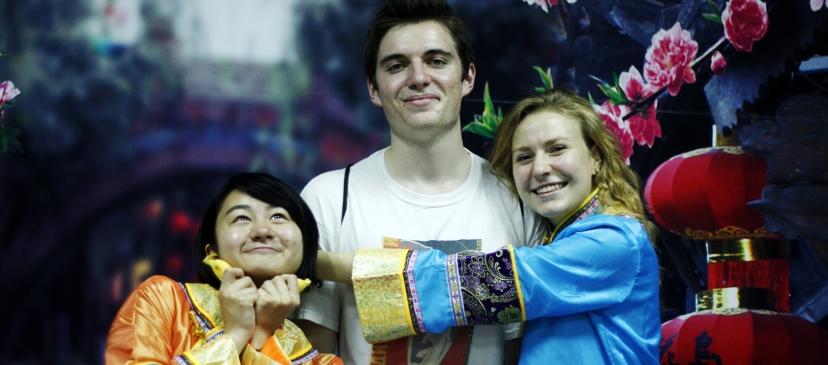The Mid-Autumn Festival is traditionally celebrated on the 15th day of the 8th lunar month. This year it fell on Thursday, September 19th. On Sunday, September 22nd, NYU Shanghai invited the entire student body to celebrate the Mid-Autumn Festival on campus. Mio Bischoff, an American student, commented that, “It was great to see so many of my classmates having fun together. I really appreciate how NYU Shanghai brought together so many traditional Chinese arts for all of us to enjoy.”
The Student Activities and Student Life offices filled the event with sugar art, face painting, clay animals, name painting, photo areas with traditional costumes, mooncakes, bubble tea, fan painting, traditional water town snacks, and a presentation on the history and origins of the Mid-Autumn Festival.
One of the highlights of the celebration was the name-painting station, where an artist painted both Chinese and English names and embossed his calligraphy with colorful birds and mountains. At the fan-painting table, freshman Hunter Jarvis gave the celebration two thumbs up while painting her fan to look like a sunset. Chinese student Yi Chen also liked the availability of the different cultural experiences, noting that, “we can see some customs and traditional Chinese art that students might not otherwise know about.” Students also enjoyed a photo booth where they dressed in traditional Chinese costumes and had their picture taken as a memento of the night. The costumes had yellow or purple trim, and the photo backdrop featured either a moon and cherry blossoms or a bridge with red lanterns. “Usually people take similar pictures at tourist attractions. I was pleasantly surprised that we had this opportunity,” commented Chinese student Jiaming Xia.
The Mid-Autumn Festival is known by many names, including Moon Festival, Reunion Festival, Mooncake Festival, Harvest Festival, and Chinese Thanksgiving. The festival originated from ancient moon worship by the Chinese emperor during the dynastic period and progressed to include the entire population in the modern era. The Chinese government declared it a national holiday in 2008. Traditional celebrations include lighting lanterns on the streets, eating mooncakes, sitting outside and appreciating the full moon, and spending time with family.



Photo credit: Anna Perez


